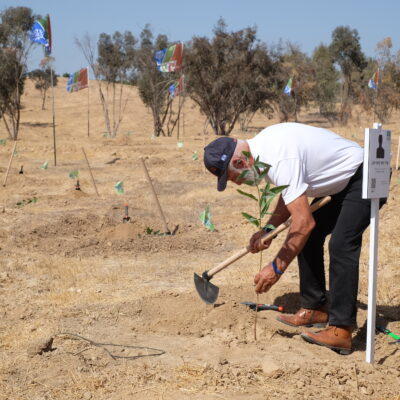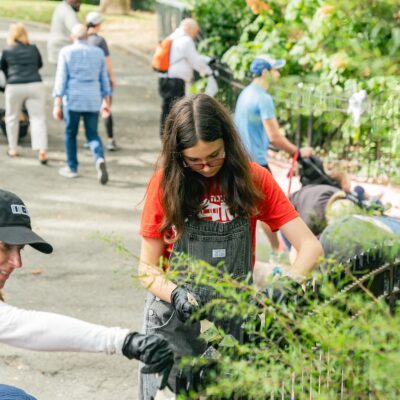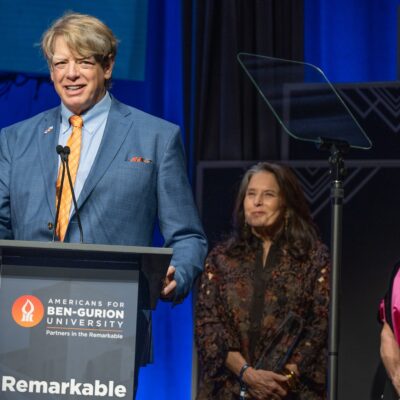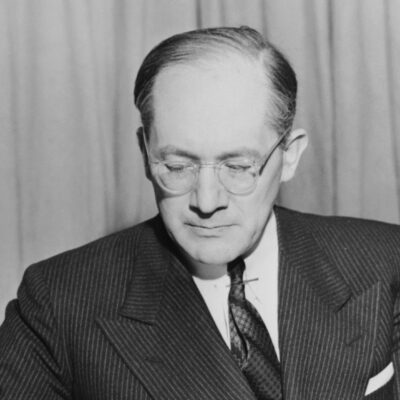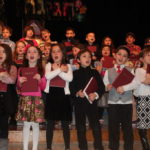The Big Jewish Question on My Mind:
How will the Future Landscape of North American Jewry impact the non-Orthodox Day School World?
 By Rabbi Harry Pell
By Rabbi Harry Pell
[This is the fourth in a five-part series on “Big Questions on Our Jewish Minds,” featuring alumni of the Day School Leadership Training Institute (DSLTI), part of the Leadership Commons at the William Davidson Graduate School of Jewish Education of JTS. You can join our series’ authors in conversation at the “Big Jewish Questions on Our Minds” session during the Prizmah Jewish Day School Conference coming up in March in Atlanta, Georgia.]
I learned a great deal from my high school Gemara teacher, S. Hirsch Jacobson z”l, and not all of it had to do with Gemara. In between studying Masechet Megilah and Masechet Bava Kama of the Babylonian Talmud, he also taught us about Judaism as a whole, including how it had evolved over the centuries, and how it would likely continue to evolve.
An accomplished veteran educator in Solomon Schechter schools, Jacobson once shared provocatively with my class that the Conservative Movement was an ‘experiment.’ When we pushed him to elaborate, he explained what he meant: We ‘know,’ he told us, that a cloistered, traditional Judaism will survive generation after generation; and we ‘know’ that a purely assimilationist Judaism will not make for Jewish great-grandchildren; but what we don’t yet ‘know,’ he explained to us, is whether a Judaism that seeks to balance tradition and halachic commitment with modernity and worldly engagement is viable in the long term. In his eyes, the Conservative Movement, and in fact most modern movements, were experiments. In another hundred years, he would tell us, we’ll know then.
Hirsch Jacobson passed away two decades ago, but the questions he raised have stayed with me today, especially in my role as the Associate Head of a non-Orthodox day school. If anything, these questions have intensified in recent years with the findings of the 2013 Pew Research Center’s ‘A Portrait of Jewish Americans’ as well as the more recent American Jewish Committee’s 2017 ‘Survey of American Jewish Opinion.’ What will the landscape of North American Jewry look like in the future? How will Jews identify religiously and what effects will that have on current mainstream Jewish movements and institutions? As an educator committed to the lasting impact of day school education on children and the adults they become, where will non-Orthodox day schools fit in this future landscape?
These are the big Jewish questions on my mind, and I think of them through a lens of three concentric circles. As a believer in the validity of liberal Judaism, I wonder what the answers to these questions will mean to the future of the non-Orthodox world; I also think about these questions in my professional capacities as a Conservative rabbi and as a day school professional; and ultimately, as a Jew for whom the Conservative Movement’s approach has resonated deeply, I ponder these questions on a personal level.
According to the 1990 National Jewish Population Study (NJPS 1990), back when I was studying Gemara in high school the core Jewish population of the United States was 5.5 million people, of whom approximately 7% of the adults identified as Orthodox Jews, 42% as Reform Jews, 38% as Conservative Jews, and the remaining 13% as Reconstructionist, Just Jewish, or Something Else. Also of note, the study found that 52% of Jews entering into marriages in the five years leading up to the study were doing so with people of other faiths, and there was much speculation at the time about the religious identity in which the children of these marriages would be raised.
Fast-forward a little more than twenty years to 2013 and the release of Pew’s ‘A Portrait of Jewish Americans,’ (Pew 2013). There are now 6.7 million Jews who would fit the 1990’s criteria for ‘core Jewish population,’ an increase of only 22 percent compared to an overall US population increase of 27 percent. In terms of marriage, 58% of marriages entered into by Jews in the eight-year period leading up to the Pew findings were intermarriages, with that statistic rising to 71% for Jews who identify in ways other than Orthodox. We US Jews are also shifting in how we affiliate, with 10% of us now affiliating as Orthodox, 35% Reform, 18% Conservative, 6% other, and 30% no denomination, including many who define themselves as ‘Jews of no religion.’ For me as a rabbi raised and ordained in the Conservative Movement, most startling is the shift in affiliation of Jews under the age of 30, of whom only 11% identify as Conservative.
If the Conservative Movement, or modern movements in general, were experiments, I feel forced to ask, are they failing? The only movement that has grown over the past twenty years is the Orthodox, whose members are younger and raising larger families on average, and so poised for more growth. Meanwhile, the largest gain overall is in among Jews who don’t engage or identify with any particular religious movement, including a majority of those who define themselves as Jewish by ethnicity but not religion, a group that Pew shows overwhelmingly raise their children as NOT Jewish (the all-caps belongs to Pew, but the concern is equally mine). Given this shift, what is the future of non-Orthodox Judaism as a whole? And where do day schools fit in this shifting mix?
From where I sit in the New York tri-state area, I see new schools opening to meet the demand in the Orthodox community. But the future of movement affiliated and community non-Orthodox schools is more of a question, given the shrinking numbers of liberal Jews and the smaller percentage of these Jews who have historically sent their children to day schools in the first place.
To be sure, there are also positive questions we can ask. What doors do these shifts open, and how might these shifts enable schools to self-define their ideologies in ways that may not align with legacy denominations, yet align well with families and their hopes and dreams for their children? Moreover, what can we learn from the communities where greater percentages of multi-faith families are raising Jewish children? And how might day schools appeal to these families as a compelling setting in which to provide their children with both a Jewish and secular education? Part of this trend also seems to be a larger American movement away from both formal affiliations and support for large institutions, and instead towards grassroots organizations and finding individual meaning; yet up until now and from my perspective, the former much more easily facilitates viable Jewish day schools than the latter.
Finally, I wonder personally what this means for the Jews of today whose desire to balance tradition and modernity echoes that same desire among the founders of the Conservative experiment over 100 years ago. What does one do when one’s religious ideology and hashkafah (outlook) still feels relevant, meaningful, and even vital, even as the institutions and affiliations that have championed it in the past are shifting? What if what works for me Jewishly, and in fact what I need as a Jew, is compelling to a smaller and smaller subset of the Jewish community? These are the Big Jewish Questions that are keeping me awake at night.
Rabbi Harry Pell serves as Associate Head of School at Schechter Westchester, a K-12 Jewish day school in White Plains and Hartsdale, NY. Harry holds a Rabbinic Ordination, Masters in Jewish Education, and is an alumnus of the Day School Leadership Training Institute (DSLTI) at JTS, and currently serves on the DSLTI faculty as the rabbinic mentor.

 Add EJP on Google
Add EJP on Google